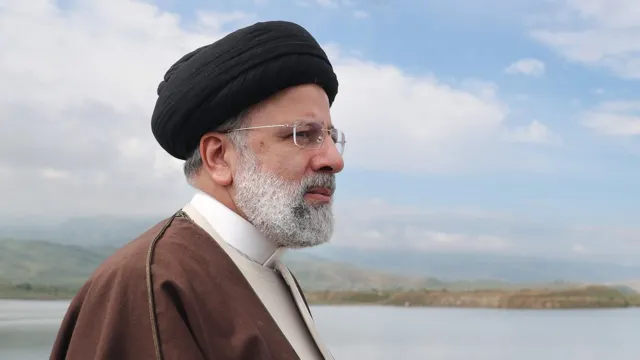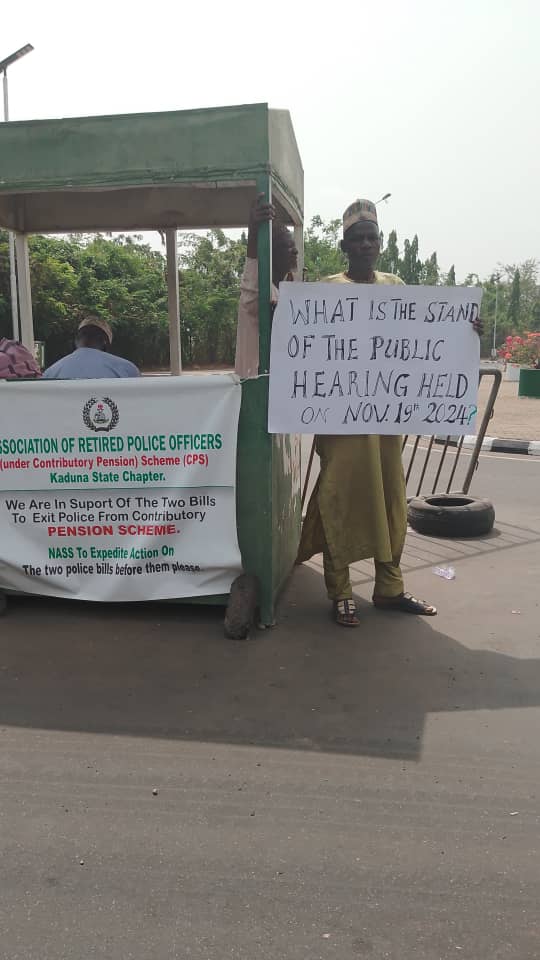News
State media confirm Iran’s president, others dead in helicopter crash

State media confirm Iran’s president, others dead in helicopter crash
By Francesca Hangeior
Iranian state media said President Ebrahim Raisi died on Monday after his helicopter crashed in a mountainous region of the country.
The government has not yet issued a confirmation of the leader’s death.
However, rescue teams had been scouring the area since Sunday afternoon after a helicopter carrying Raisi, the foreign minister and other officials had gone missing.
Early Monday, relief workers located the missing helicopter, with state TV saying the president had died.
“The servant of Iranian nation, Ayatollah Ebrahim Raisi has achieved the highest level of martyrdom whilst serving the people,” state television said Monday, with Mehr news agency also saying he was dead.
State television broadcast photos of Raisi, with the voice of a man reciting the Koran playing in the background.
Iran’s vice president for executive affairs Mohsen Mansouri posted on X a Koranic verse used to express condolences.
Fears had been growing for the 63-year-old ultraconservative after contact was lost with the helicopter carrying him as well as Foreign Minister Hossein Amir-Abdollahian and others in East Azerbaijan province on Sunday.
A total of nine people were on board the aircraft, according to Tasnim news agency.
Iran’s Red Crescent chief Pirhossein Koolivand said rescue teams headed towards the site of the crash after locating the aircraft.
“The helicopter has been found. Now, we are moving toward the helicopter,” said Koolivand. “We are seeing the helicopter. The situation is not good.”
“Upon finding the helicopter, there was no sign of the helicopter passengers being alive as of yet,” state TV reported about 15 hours after the aircraft went missing.
Iranian media including Fars news agency shared drone images of what appeared to be the wreckage of the helicopter.
State TV first reported Sunday afternoon that “an accident happened to the helicopter carrying the president” in the Jolfa region of East Azerbaijan province.
Interior Minister Ahmad Vahidi said the helicopter “made a hard landing” in bad weather.
He urged people to get their information “only from state television”, and not listen to foreign media channels Iran deems hostile to the Islamic republic.
Raisi’s convoy had included three helicopters, and the other two had “reached their destination safely”, said the Tasnim news agency.
Supreme leader Ayatollah Ali Khamenei urged Iranians to “not worry” about the leadership of the Islamic republic, saying “there will be no disruption in the country’s work”.
Expressions of concern and offers of help came from abroad, including Iraq, Kuwait, Qatar, Saudi Arabia, Syria, Russia, China and Turkey, as well as from the European Union which activated its rapid response mapping service to aid in the search effort.
Iran’s cabinet held an emergency meeting led by Vice President Mohammad Mokhber after the incident, the IRNA news agency reported.
Army, Revolutionary Guard and police officers were involved in the search, authorities said, as TV stations showed pictures of Red Crescent teams walking up a hill in the mist, while rows of emergency response vehicles waited.
Raisi had visited the northwestern province to inaugurate a dam project together with Azerbaijan’s President Ilham Aliyev, on their common border.
Aliyev said in a post on X that “we were profoundly troubled by the news of a helicopter carrying the top delegation crash-landing in Iran”.
Foreign countries were closely following the search at a time of high regional tensions over the Gaza war between Israel and Hamas since October 7 that has drawn in other armed groups in the Middle East.
A US State Department spokesman said: “We are closely following reports of a possible hard landing of a helicopter in Iran carrying the Iranian president and foreign minister”, adding that “we have no further comment at this time”.
US President Joe Biden has been briefed on the crash, an American official said on condition of anonymity.
Raisi has been president since 2021 when he succeeded the moderate Hassan Rouhani, at a time when the economy was battered by US sanctions over Iran’s contested nuclear programme.
Iran saw a wave of protests triggered by the death in custody of Iranian-Kurdish woman Mahsa Amini in September 2022 after her arrest for allegedly flouting dress rules for women.
In March 2023, regional rivals Iran and Saudi Arabia signed a surprise deal that restored diplomatic relations.
The Gaza war sent regional tensions soaring and a series of tit-for-tat escalations led to Tehran launching hundreds of missiles and rockets directly at Israel in April this year.
In a speech following Sunday’s dam inauguration, Raisi emphasised Iran’s support for Palestinians, a centrepiece of its foreign policy since the 1979 Islamic revolution.
“We believe that Palestine is the first issue of the Muslim world, and we are convinced that the people of Iran and Azerbaijan always support the people of Palestine and Gaza and hate the Zionist regime,” said Raisi.
Hamas, which the United States and European Union consider a terrorist group, said that “in this painful incident, we express our full solidarity with the Islamic Republic of Iran, its leadership, government and people”.
News
Day 3: Retired Nigerian police officers continue protest on Police Bills(Photos)

By Emmanuel Agaji
Association of Retired Police Officers, Kaduna chapter protest on Police Bills entered day three today, February 27, 2025, Thursday at the National Assembly.
Naijablitznews reports that some of the placards being displayed by the retired simply indicate that the output and input of November 19th, 2024 public hearing on the Bills should be implemented.
They equally supported the fact that the police force should exit the contributory scheme.
The very aged retired officers could be seen sighted sitting under the son bearing placards which they display for motorists to look at.
See photos:
News
Just in: Police restore Obasa’s security details, withdraw Meranda’s as ex-Lagos speaker set for return

By Kayode Sanni-Arewa
Mudashiru Ajayi Obasa who was impeached as speaker of the Lagos House of Assembly on January 13, 2025, is set to return.
Daily Trust understands that his security details have been restored just as those of Hon. Mojisola Lasbat Meranda, have been withdrawn.
Meranda was Obasa’s deputy before the impeachment. After his removal, the house unanimously elected Meranda, making her the first female to occupy the position in the history of the state.
Though she’s yet to officially resign as the Speaker of the House, her fate was reportedly sealed over the weekend by key All Progressives Congress (APC) leaders who intervened in the crisis rocking the House of Assembly.
Former National Chairman of APC, Chief Bisi Akande, former Governor of Osun State, Chief Olusegun Osoba, former Commissioner for Justice, Dr. Muiz Banire and members of the Governance Advisory Council (GAC) and some of the lawmakers had met over the weekend to find a resolution to the crisis.
It was at the meeting that the fate of Meranda was sealed as she was reportedly asked to vacate her seat.
There are indications that Obasa might return as the Speaker as following the resolutions reached by the leaders which largely favoured Obasa’s return.
“In truth, what they said was that Obasa’s removal was illegal and the lawmakers were directed at the meeting to go and return him,” sources familiar with the matter had said.
It was not clear yet when the House would reconvene to effect the expected changes.
Meranda had adjourned plenary indefinitely two weeks ago when there was commotion in the assembly as a result of invasion by operatives of the Department of State Services (DSS).
News
Canada deports more people, particularly those rejected for refugee status

By Kayode Sanni-Arewa
Canada deported more people last year to hit its highest annual level of removals in about a decade, overwhelmingly deporting people whose refugee claims were rejected, data obtained by Reuters showed.
By late November, Canada’s removal numbers had reached their highest point since at least 2015, when the governing Liberals led by Prime Minister Justin Trudeau came to power
The government has also budgeted more money for deportations this year.
Trudeau’s government, now in its final days, has sought to show Canadians it is getting tough on immigration amid a rising backlog of refugee claims and a backlash against immigrants over concerns that immigration is exacerbating a housing shortage.
Canada’s border agency said the spike in deportations is tied to a “significant increase” in the number of people applying for asylum since 2020, prompting it “to enforce removal orders in a more efficient and timely manner.”
Reuters requested border agency data on deportations, excluding people who left of their own accord and those sent back to the United States as part of a bilateral agreement under which would-be asylum-seekers are turned back.
The remaining total shows Canada deported 7,300 people between January 1 and November 19, 2024, an 8.4% increase over all of 2023 and a 95% increase over 2022.
The border agency did not provide equivalent figures for all of 2024. This week, it posted data online from 2019 to 2024 that do not break down deportations excluding returns to the US under that bilateral agreement. This data also showed an increase in the number of deportations.
About 79% of the 7,300 people deported in the first 11 months of last year were deported because their claim for refugee status had been rejected. That is up from about 75% in 2023 and 66% in 2022.
About 11% of the people deported last year through November 19 were removed for non-compliance with the conditions of their stay in Canada unrelated to a refugee claim, for example, for overstaying a visa. About 7% were deported because they had committed a crime either in Canada or elsewhere.
A spokesperson for Public Safety Minister David McGuinty did not immediately respond to questions about the deportations.
A spokesperson for the border agency said in an email that removal numbers fluctuate.
“The number of removals of those who received a negative asylum determination have increased each year since emerging from the pandemic,” wrote the spokesperson, Luke Reimer.
“These efforts are essential in maintaining the integrity of Canada’s asylum system.”
Canada has been dealing with record numbers of refugee claims, although the monthly totals dropped to 11,838 in January from 19,821 in July. There were 278,457 claims pending as of last month – the highest pending total in decades.
A campaign flag for US President Donald Trump flutters from a private residence between the Canada and US border in Mooers Forks, New York, US, Feb 4, 2025. REUTERS/Brian Snyder
MORE MONEY FOR DEPORTATIONS
One concern with these removals, especially those targeting failed refugee claimants, is that people can be deported while still appealing decisions about the risk they face if returned to their home countries, said Aisling Bondy, president of the Canadian Association of Refugee Lawyers.
“They could be removed even if there is significant error in the risk determination,” she said, worrying people are being deported to places they will face persecution.
Reimer said in an email that the agency “only actions a removal order once all legal avenues of recourse that can stay a removal have been exhausted.”
The rise in refugee claimant deportations speaks to the government’s priorities, including a tough stance on migration, said University of Toronto law professor and Human Rights Chair Audrey Macklin.
“You can decide that you want to make a show of how many people you are deporting to show that you are effective at policing the border,” Macklin said. “Then you go with people who are easier to find and remove, and those are going to be, often, refugee claimants.”
he prospect of deportation could also deter would-be refugee claimants, she said.
Canada is on track to deport even more people in the coming years: Late last year, the government pledged C$30.5 million ($21.3 million) over three years to increase deportations.
Canada Border Services Agency spent C$65.8 million on removals in 2023-24, up from C$56 million the year before.
At the same time, Canada has pledged C$1.3 billion toward border security to appease US President Donald Trump as he threatens sweeping tariffs on Canadian imports.
The ranks of those eligible for deportation could grow.
Canada is slashing temporary and permanent immigrant numbers and part of its plan relies on more than 1.2 million temporary residents, including workers and students, leaving the country next year, and another 1.1 million leaving the following year, according to government figures.
Immigration Minister Marc Miller has said Canada will deport people who do not leave on their own.
“It is people’s choice not to leave, and if they don’t, they face the consequences – including, after due process, deportation,” he told Reuters last year.
-

 News22 hours ago
News22 hours agoSenate committee on health invites stakeholders to a one-day public hearing on 3 major Bills
-

 News15 hours ago
News15 hours agoThey’re after my life i – NAFDAC DG raises alarm
-

 News19 hours ago
News19 hours agoEmefiele: Judge turns down request to withdraw from trial
-

 News15 hours ago
News15 hours agoNaira again falls against Dollar – February 26
-

 News15 hours ago
News15 hours agoPolice Halt Attempt To Invade Kano Emir’s Palace, Nab 17 Suspects
-

 News15 hours ago
News15 hours agoSAD! Billionaire Folorunso Alakija Reportedly Goes Blind
-

 News19 hours ago
News19 hours agoBenue boils again as gunmen abduct 4 female varsity students
-

 Metro9 hours ago
Metro9 hours agoBoko Haram reportedly raze villages in Adamawa communities, loot property










